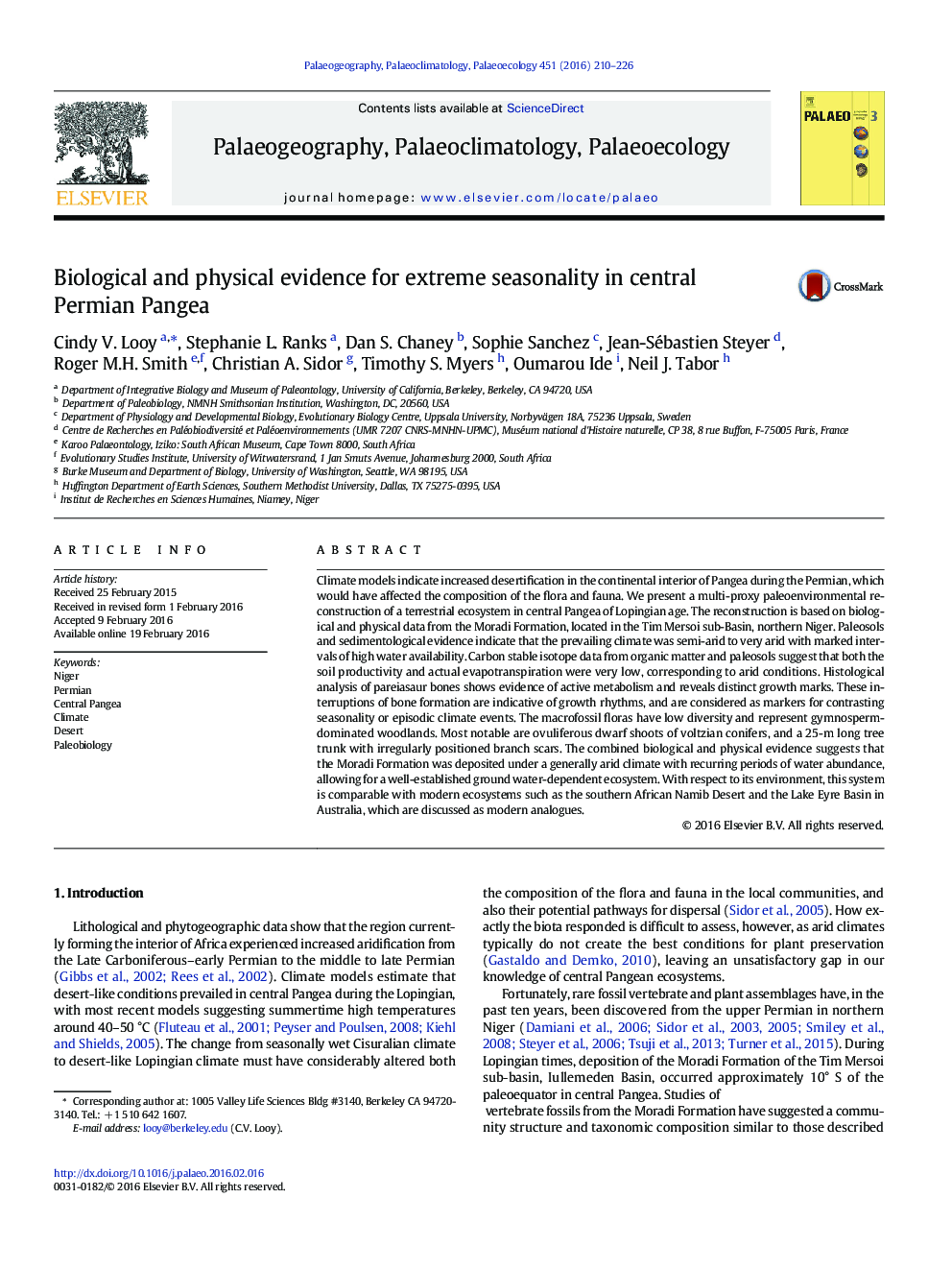| Article ID | Journal | Published Year | Pages | File Type |
|---|---|---|---|---|
| 4465727 | Palaeogeography, Palaeoclimatology, Palaeoecology | 2016 | 17 Pages |
•Biological and physical evidence supports extreme climate in central Permian Pangea•Paleosols and sedimentology indicate aridity with periodic high water availability•Carbon isotopes suggest soil productivity and evapotranspiration were very low•Pareiasaur bones shows evidence of active metabolism and distinct growth marks•The macroflora includes a 25 m long petrified log and voltzian conifer fossils
Climate models indicate increased desertification in the continental interior of Pangea during the Permian, which would have affected the composition of the flora and fauna. We present a multi-proxy paleoenvironmental reconstruction of a terrestrial ecosystem in central Pangea of Lopingian age. The reconstruction is based on biological and physical data from the Moradi Formation, located in the Tim Mersoi sub-Basin, northern Niger. Paleosols and sedimentological evidence indicate that the prevailing climate was semi-arid to very arid with marked intervals of high water availability. Carbon stable isotope data from organic matter and paleosols suggest that both the soil productivity and actual evapotranspiration were very low, corresponding to arid conditions. Histological analysis of pareiasaur bones shows evidence of active metabolism and reveals distinct growth marks. These interruptions of bone formation are indicative of growth rhythms, and are considered as markers for contrasting seasonality or episodic climate events. The macrofossil floras have low diversity and represent gymnosperm-dominated woodlands. Most notable are ovuliferous dwarf shoots of voltzian conifers, and a 25-m long tree trunk with irregularly positioned branch scars. The combined biological and physical evidence suggests that the Moradi Formation was deposited under a generally arid climate with recurring periods of water abundance, allowing for a well-established ground water-dependent ecosystem. With respect to its environment, this system is comparable with modern ecosystems such as the southern African Namib Desert and the Lake Eyre Basin in Australia, which are discussed as modern analogues.
